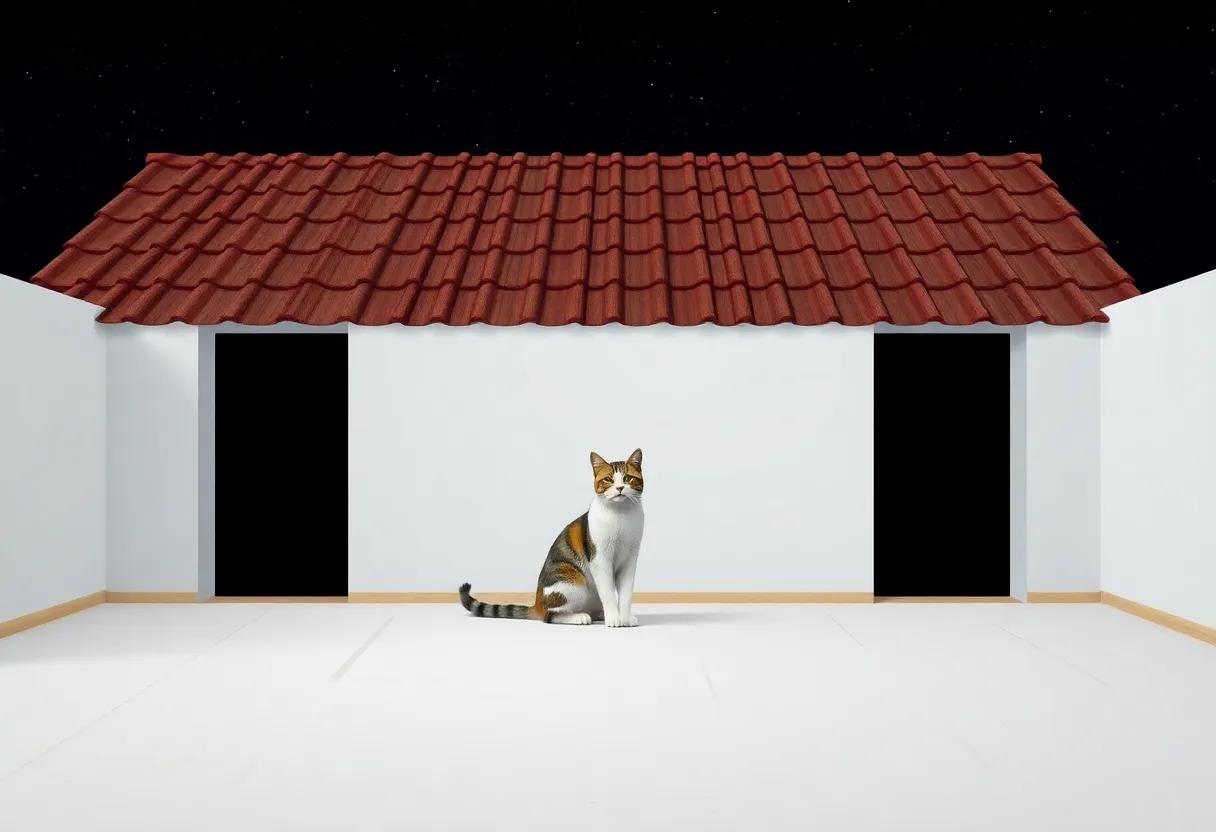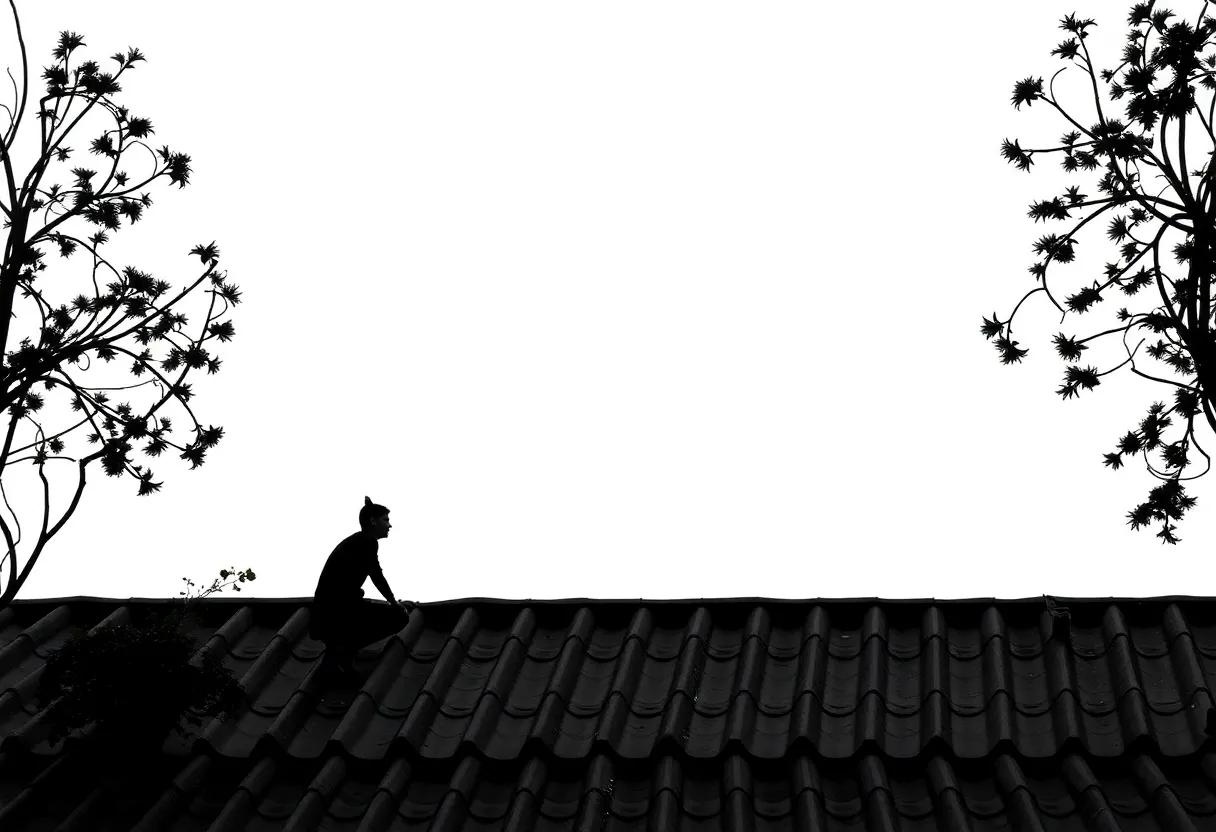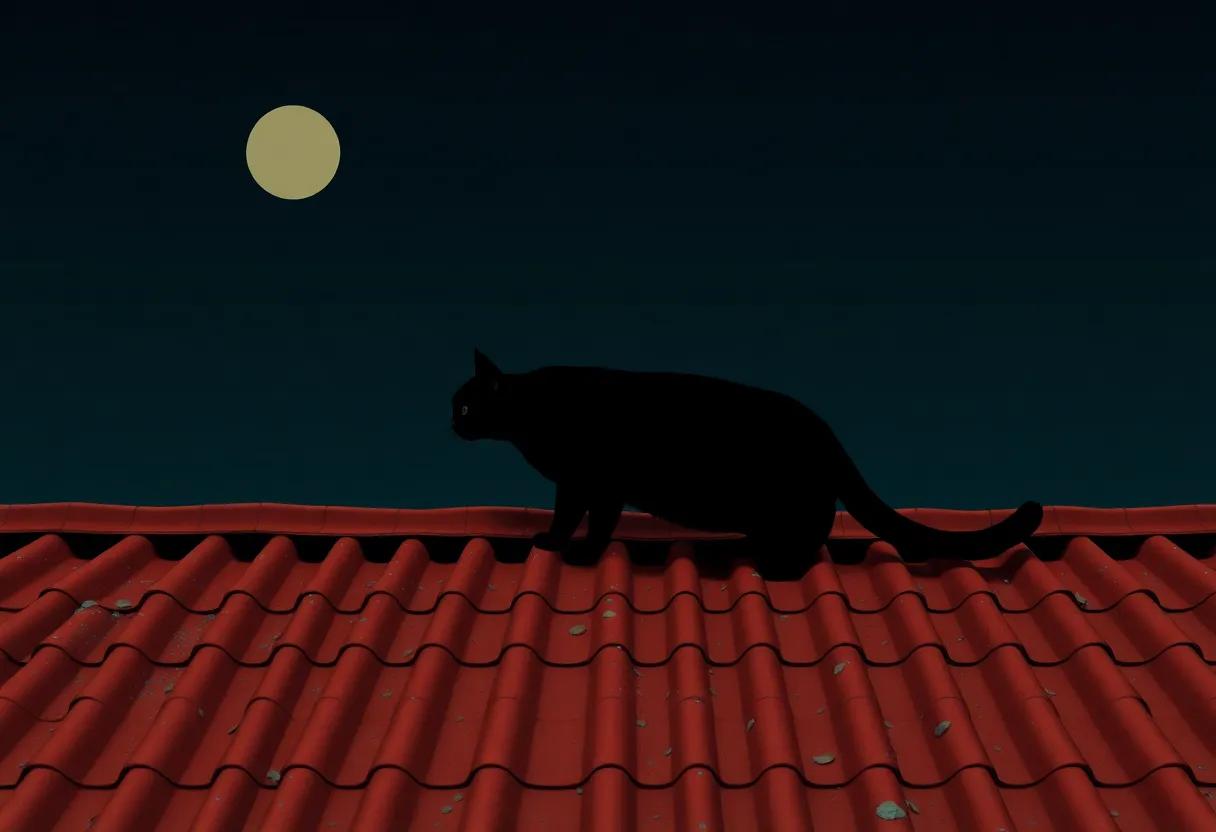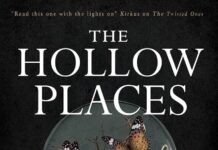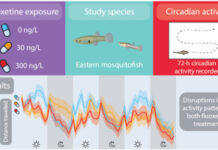In the intricate tapestry of Tennessee Williams’ “Cat on a Hot Tin Roof,” truth and deception play a delicate game of cat and mouse, revealing the raw underbelly of human relationships. Set against the backdrop of a decaying Southern plantation, this renowned play unravels a web of lies that bind its characters, skillfully exposing the layers of disillusionment and desire that define them. In this review, we will delve into the complexities that surround the pursuit of truth amidst a sea of falsehoods, exploring how Williams masterfully confronts the intricacies of family dynamics, societal expectations, and personal yearning. Through a meticulous examination of the characters’ struggles, we aim to uncover the rich symbolism and thematic depth that make “Cat on a Hot Tin Roof” not just a dramatic narrative, but a profound commentary on the human condition itself.
Unraveling Family Dynamics in Tennessee Williams’ Masterpiece
Tennessee williams intricately weaves family dynamics throughout “Cat on a Hot Tin Roof,” presenting a vivid tableau of affection,resentment,and desperation. At the heart of the play, the Pollitt family grapples with buried truths and unspoken lies that define their relationships. Characters such as Brick and Maggie serve as archetypes of emotional complexity, eloquently illustrating the tension between love and alienation. Key elements include:
- Manipulation: the characters frequently engage in psychological games, highlighting the struggle for power and control.
- Repressed Emotions: Their interactions are laced with unresolved issues, leading to a suffocating atmosphere of deceit.
- Generational Conflicts: The clash between traditional values and modern desires creates an undercurrent of tension within the family.
The play’s setting—an affluent Southern home—serves as a microcosm for broader societal issues, revealing how family legacies influence personal identities. Williams skillfully showcases how the desperate need for acceptance and authenticity is hindered by familial expectations. A comparative analysis of the characters sheds light on these dynamics:
| Character | Role in Family | Driving Motivations |
|---|---|---|
| Brick Pollitt | Son | Escapism through alcohol; quest for truth |
| Maggie Pollitt | Wife | Desire for affection; fear of losing everything |
| Big Daddy | Patriarch | Confronting mortality; seeking honesty |
The Tension Between Reality and Illusion in the Southern Gothic Narrative
in the heart of Southern Gothic literature lies a persistent struggle between the tangible and the ethereal, and Tennessee Williams masterfully illustrates this dichotomy in his play. Characters are frequently enough ensnared in a web of deceit,battling not only their internal demons but also the palpable need to uphold familial legacy. Within the Pollitt household, Burl Ives’ Big Daddy epitomizes the hard truths of mortality and societal expectation, juxtaposed against moments of tender illusion where the characters grasp for solace in the face of profound disconnect. This tension manifests through layers of lies, as seen through the interactions between Brick and Maggie, revealing how their denial of reality serves as both a shield and a prison.
The interplay of truth and illusion is further accentuated through the use of symbolism and dialog, each laden with depth and interpretation. Critically, the notion of “mendacity” serves as a thematic anchor, representing not only individual deception but also the broader societal facades that characters maintain. To illustrate this complex narrative,consider the table below that highlights key relationships and their inherent contradictions:
| Character | Symbol of Truth | Symbol of Deception |
|---|---|---|
| Brick | Crutch (physical support) | Alcohol (escapism) |
| Maggie | Cat (instinctive survival) | Lies about love |
| Big Daddy | Terminal illness (inevitability) | Wealth (false security) |
through these contrasting elements,Williams invites the audience to reflect on the truths we forge and the illusions we cling to,illustrating how families are often intertwined in a narrative of both fragility and fierce resilience. This Southern Gothic lens elucidates the deeper societal issues underpinning personal relationships,where the quest for authenticity is often muddied by the very lies that appear to protect and unify.
Exploring the Duality of Truth and Deception Among Rivals
The intricate web of truth and deception weaves through the relationships among the characters in Tennessee Williams’ Cat on a Hot Tin Roof, particularly among rivals. At the heart of the drama lies a tension that shapes the interactions between Brick, Maggie, and Big Daddy. Each character dons a mask, revealing truths and concealing motives in a dance of rivalry. The relentless pursuit of acceptance and the fear of vulnerability compel them to manipulate perceptions, highlighting the lengths to which individuals will go to protect their own interests.In such a competitive emotional landscape, truth frequently enough becomes subjective, shaped by personal agendas and the desire to maintain power within familial ties. The façade of honesty disintegrates as characters grapple with the burden of lies, revealing how deceit can be a defense mechanism when faced with harsh realities.
As the play unfolds, moments of revelation clash with calculated deception, showcasing the dual nature of relationships defined by rivalry. The structure of the setting—a decaying Southern estate—mirrors the dilapidation of truth within these bonds, serving as both a physical and emotional battleground. Each character’s struggle reveals conflicting motivations that drive their actions,leading to harsh confrontations filled with bitterness and longing. This creates a volatile atmosphere where truth continues to shift, as it is often inconvenient in the face of emotional survival. The ongoing conflict invites the audience to question the underlying motivations of each character, prompting reflections on the ambiguity of morality within human relationships. The exploration of this intricate duality ultimately exposes the fragile nature of trust and the complex dynamics that govern the behavior of rivals.
The Role of Lies in Shaping Personal Identity and Relationships
The interplay of falsehoods and reality in “Cat on a Hot Tin Roof” creates a complex landscape where characters navigate their identities through deception. Lies become a fundamental part of their existence, shaping not only how they see themselves but also how they are perceived by others. As an example,Big Daddy’s denial of his terminal illness and Brick’s avoidance of his feelings encapsulate a desperate need for control in a world rife with uncertainty. In this dysfunctional family, truth and deception intermingle, leading to profound implications for personal identity. Rather than standing as mere tools of manipulation, lies reveal deeper vulnerabilities and desires, such as the longing for acceptance and the fear of exposure.
This duality of truth and falsehood extends to relationships within the play, where bonds are both strengthened and strained by deception. The characters often employ lies to shield themselves from emotional pain, yet these very lies create a chasm, leaving relationships fragile and fragmented. Consider how Maggie’s fabrications about her love for Brick act as both a shield and a barrier to authenticity in their marriage. The result is a tapestry of interactions defined by unspoken truths and hidden resentments. The relationship dynamics can be illustrated as follows:
| Character | Lie/Deception | Impact on Identity |
|---|---|---|
| Brick | Denial of his feelings for Skipper | Avoids confronting his grief |
| Maggie | Claims of a happy marriage | Struggles with self-worth |
| Big Daddy | Denying his illness | Clings to power and control |
This intricate web of deception highlights how lies serve as both a coping mechanism and a destructive force, ultimately shaping the identities and relationships of the characters in a profound manner.
Power Struggles: The Battle for legacy and Authenticity
In Tennessee Williams’ play, the invisible scars of familial expectations and personal aspirations manifest through the power struggles among the Pollitt family. each character wrestles with their own concept of legacy, frequently enough leading to intense confrontations.The desire for control becomes a battlefield, where Brick seeks the truth behind his father’s deception, while Big Daddy’s looming presence magnifies the weight of familial duty. The theme is encapsulated in the clash between authenticity and pretense, challenging characters to confront their innermost fears and desires. This dynamic immerses the audience in a tension-filled display of emotional conflict that reflects broader societal issues of identity and heritage.
As the layers of deceit are peeled away, the audience is compelled to question what is truly at stake. The characters’ attempts to secure their legacies reveal a compelling need for self-affirmation and acknowledgment. This struggle is poignantly reflected in:
| Character | Power Struggle | Legacy conflict |
|---|---|---|
| Brick | Seeking truth in lies | Personal grief vs. family duty |
| Big Daddy | Control over family dynamics | Desire for recognition |
| Maggie | Striving for acceptance | Love vs. social status |
This intricate web of relationships illustrates that the battle for authenticity is often paved with the remnants of deceit,leaving families torn between the truth they seek and the comfort of the lies they cling to. Williams masterfully portrays how these personal and generational conflicts shape the characters’ realities,urging them—and the audience—to confront the complexities of their own truths.
Shattered Dreams: The Weight of Unfulfilled Desires
The characters in Tennessee Williams’ Cat on a Hot Tin Roof grapple with the suffocating weight of unfulfilled desires, manifesting in their relationships and dreams.Brick Pollitt, haunted by the specter of his deceased friend Skipper and the unresolved nature of their bond, epitomizes the struggle between reality and illusion. His emotional paralysis is mirrored in the aspirations of Maggie, who seeks not only her husband’s love but also a sense of purpose amid a crumbling family legacy.This tension creates a rift in their marriage, revealing how unacknowledged desires can congeal into resentment, resulting in a devastating cycle of grief and longing.
The intricate web of lies within the Pollitt family enhances the theme of shattered dreams, as each character navigates their own disillusionment. The desperate need for acceptance, particularly from Big Daddy, fuels the conflict between truth and deception. the façade of success masks the fragility of their existence, leading to a profound sense of isolation. In this tragic landscape, dreams remain tantalizingly out of reach, leading to bitter confrontations that expose the raw vulnerability hidden beneath their polished exteriors. The play, thus, becomes a poignant exploration of how dreams unfulfilled can shape lives, turning aspirations into heavy burdens that weigh down even the most resilient spirits.
- Brick: Struggling with guilt and denial
- Maggie: A desperate quest for love and validation
- big Daddy: The patriarch hiding his mortality
- Big Mama: The emotional anchor amidst turmoil
| Character | Desire | Outcome |
|---|---|---|
| Brick | Acceptance and closure | Endless denial |
| Maggie | Love and loyalty | Frustration and loneliness |
| Big Daddy | Legacy and respect | Illusion of control |
| Big Mama | Family unity | Powerlessness |
Significant Symbolism: The Cat and Its Connection to Truth
The cat, a seemingly innocuous creature, plays a pivotal role in Cat on a Hot Tin Roof, embodying the delicate balance between truth and deception within the Pollitt family dynamics. The presence of the cat frequently enough serves as a foreshadowing device, hinting at the underlying tensions that ripple beneath the surface of the family’s interactions. In this context, the cat can be viewed as a symbol of truth, representing the hidden realities that each character grapples with yet fails to confront openly. Just as cats are often seen as enigmatic beings that lurk in the shadows, so too do the characters hide their true feelings and motives, shrouding their lives in layers of deceit.
Moreover, the cat’s elusive nature mirrors the complexities of familial relationships, underscoring the themes of pretension and identity that permeate the narrative. Each character’s perception of the cat—ranging from affection to disdain—reflects their own struggles with honesty and authenticity. In exploring these nuances, it becomes clear that the cat stands as a metaphor for the truths that remain unspoken yet profoundly influence the characters’ lives. As the drama unfolds, the audience is invited to question the nature of truth itself, contemplating whether it is something to be embraced or evaded, much like the curious but secretive feline that symbolizes it.
A Deep Dive into Character motivations and Their Secrets
In Tennessee Williams’ poignant drama, characters weave a complex tapestry of motivations that reveal their deepest desires and fears. Each individual is driven by unique influences that complicate their relationships, fostering both connection and conflict. For instance,Brick Pollitt grapples with his crippling grief over his friend’s death,leading him to shield his emotions under a facade of stoicism. In contrast, Maggie Pollitt desperately seeks validation and affection, revealing her vulnerability as she confronts her husband’s emotional distance. This intricate interplay of motivations not only magnifies the undercurrents of their lives but also serves as a reflection of the societal expectations that bind them.
Moreover, the characters’ secrets serve as both the catalyst and the barrier in their interactions. The crumbling facade of the Pollitt family wealth and health is amplified through revelations of Big Daddy’s terminal illness, which unveils another layer of deceit cloaked in denial. In this world, truth and lies are not merely juxtaposed; they intertwine to create a complex moral landscape. The following table outlines key characters and their associated motivations and secrets:
| Character | Motivation | Secret |
|---|---|---|
| Brick Pollitt | Grief and despair | Guilt over his friend’s death |
| Maggie Pollitt | Desire for love and acceptance | Fear of childlessness |
| Big Daddy | Desire for power and legacy | Terminal illness |
| Big Mama | Need for familial unity | Unwillingness to face reality |
The Setting as a Crucible for Conflict and Revealing Truths
In Tennessee williams’ poignant narrative, the Mississippi plantation becomes a microcosm where hidden truths and simmering deceptions collide. The expansive setting is not merely a backdrop; it takes on a life of its own, amplifying the tensions between the characters. The atmosphere is thick with unspoken words, creating a crucible wherein familial loyalty clashes with personal desires.As the characters navigate the complex web of lies—each one a protective armor against their vulnerabilities—the audience witnesses the rawness of their emotions laid bare.The very walls of the estate seem to witness the unraveling of facades, echoing every whispered secret and challenge.The oppressive heat, working as a metaphor for the boiling conflicts, underscores how the surroundings can magnify both the pain of truth and the bitterness of deceit.
Throughout the unfolding drama, the setting also acts as a paradoxical sanctuary and a prison for its inhabitants.The hidden corners of the house harbor suppressed memories and unresolved grievances, contributing to an atmosphere thick with nostalgia and regret. As Brick and Maggie confront their strained relationship amidst the weight of societal expectations, the locale morphs into a crucial stage for these painful confrontations. Key scenes, set against the backdrop of lavish rooms and the oppressive exterior, invite the audience to reflect on how personal and collective struggles are shaped by their surroundings. Within these confines, intricate dynamics reveal not only the characters’ individual journeys but also the broader truths about human nature that resonate far beyond the confines of the estate.
Dramatic Irony: What the Audience Knows vs. What Characters Believe
In Tennessee Williams’ “Cat on a Hot Tin Roof,” the interplay of belief versus reality creates a poignant tension that resonates deeply with the audience. the characters navigate a world rife with deception, yet the viewers possess insights that elude them. This situation cultivates a sense of dramatic irony, as the audience understands the fragility of the family’s facade. For instance, while Brick clings to a denial of his brother’s illness, the audience is acutely aware of the impending doom. The audience watches as the characters engage in rituals of denial, leading to a profound sense of tragedy—their efforts to uphold falsehoods ultimately unravel into painful truths.
The complexities of this dramatic irony extend further through the lens of the family’s dynamics. As they confront issues of mortality and legacy, each character’s perception of truth is shadowed by their desire to maintain comfort—often at the expense of sincerity. Key moments of revelation serve to heighten this irony, revealing the disparity between what characters believe and the audience knows.For example,when big Daddy’s ignorance of his illness clashes with the audience’s awareness,it emphasizes the tragic futility of their struggles. This dynamic creates a layered narrative where the audience is left to grapple with the uncomfortable reality that the characters remain oblivious to—ultimately painting a rich tapestry of human fallibility and the consequences of deception.
The Unique Use of Dialogue in Exposing Hidden Agendas
In Tennessee Williams’ Cat on a Hot Tin Roof, dialogue serves as a powerful tool to unravel the complex web of deceit woven among the Pollitt family. Through deft exchanges, characters unveil their hidden agendas, often masked by layers of social niceties and familial obligations. The tension between truth and deception simmers just beneath the surface, with the dialogue acting as both sword and shield. Each line not only reflects individual motivations but also highlights the underlying dysfunction within the family, presenting a façade that oscillates between comfort and confrontation.
The deliberate choice of words and the rhythm of conversations paint a vivid picture of each character’s struggle, revealing the gulf between perception and reality. for instance, moments where Brick’s reticence clashes with Maggie’s desperate attempts to connect reveal not only their personal dilemmas but also the broader theme of societal expectations. furthermore, what is unsaid can often be more telling than spoken words—silences punctuate conversations, creating an atmosphere thick with tension and unexpressed feelings. Key elements include:
- Subtext: Often, what characters do not articulate carries more weight than their actual dialogue.
- Power Dynamics: Shifts in speaker and listener roles reveal hidden hierarchies within the family.
- Conflicts: Disagreements that emerge subtly showcase the fragility of relationships.
To further illustrate the intricate interplay of dialogue and its impact on character relationships, the table below summarizes key exchanges that unveil these hidden motivations:
| Character Pair | Context | Revealed Agenda |
|---|---|---|
| Maggie and Brick | Maggie’s pleading for emotional connection | Desire for reconciliation versus Brick’s emotional withdrawal |
| big Daddy and Brick | Discussion about mortality and inheritance | Confrontation of truth about family legacy and love |
| Gooper and Mae | Strategizing Big Daddy’s inheritance | Manipulation masked as concern for family |
These dimensions of dialogue compel the audience to navigate through layers of intention, ultimately challenging perceptions of integrity and loyalty within familial bonds. Williams’ masterful use of conversation thus becomes a lens through which we explore not only the individual struggles of characters but also the broader societal commentaries present in the play.
Emotional Resonance: How Williams connects with the Audience
Tennessee Williams masterfully weaves emotional threads throughout his characters, drawing the audience into a landscape fraught with pain, longing, and unspoken truths. The tension between the façade of success and the reality of failure is palpable in the Pollitt family dynamic. By depicting characters like Brick and Maggie, Williams showcases their inner struggles and unfulfilled desires, which resonate deeply with viewers. The portrayal of desperation and vulnerability serves to evoke empathy,making the audience question their own experiences with truth and deception:
- Brick’s alcoholism as a coping mechanism for his grief reveals layers of emotional turmoil.
- Maggie’s relentless pursuit of validation and love captures the deep-seated need for connection.
- Big Daddy’s confrontation with mortality exposes the fragility of human existence.
This context of emotional complexity allows Williams to situate the audience as active participants in the characters’ journey.As viewers witness the unraveling of familial bonds and the revelation of secrets,they become complicit in the emotional stakes at play. Through dialogue that crackles with tension and monologues that peel back emotional layers, the themes of honesty and self-deception emerge as critical narratives. Highlighting the impact of lies on the human soul, Williams ensures that these emotional resonances linger far beyond the final curtain:
| Character | Emotional Conflict | Symbolism |
|---|---|---|
| Brick | Struggles with grief and guilt | alcohol as a shield |
| Maggie | Desire for acceptance and love | The ‘cat’ as a metaphor for survival |
| Big daddy | Denial of mortality | The looming presence of disease |
cultural Context and Its Influence on Themes of Deception
The world of Tennessee Williams’ ”Cat on a Hot Tin Roof” is deeply rooted in the cultural backdrop of the American South, where traditional values often collide with the harsh realities of human emotions. In this southern setting, the characters grapple with societal expectations that dictate notions of masculinity, success, and family loyalty. The pervasive theme of deception emerges not only in the interpersonal relationships but also within the larger societal constructs—where individuals feel compelled to wear masks that conform to cultural norms. This masking often obscures the truth, leading to a complex web of lies that couples with deep-seated fears and desires.
Deception manifests itself in various forms, reflecting the characters’ struggles against cultural pressures. As a notable example, the expectations of wealth and social standing drive Brick to numb his pain through substance abuse, while Maggie’s relentless pursuit of approval reveals her battle against societal perceptions of femininity and power. These tensions can be summarized in the following key points:
- Societal Expectations: The influence of wealth and status on personal identity.
- Gender Roles: The conflict between traditional masculinity and modern ideals.
- Familial Loyalty: The burdens of duty that incite hidden truths and lies.
To further illuminate these dynamics, the table below explores the pivotal deceptions experienced by the characters and their cultural significance:
| Character | Deception | Cultural Impact |
|---|---|---|
| Brick | Denial of his feelings and past | Challenges masculine ideals of vulnerability |
| Maggie | Feigning confidence and strength | Critiques traditional notions of femininity |
| Big Dad | Concealing family secrets | Reflects the burden of legacy in Southern culture |
the Visionary Mind of Tennessee Williams: Crafting a Timeless Classic
Tennessee Williams masterfully weaves a tapestry of emotional complexity in his portrayal of familial relationships and societal expectations. At the heart of ‘Cat on a hot Tin Roof’ lies the intricately constructed web of truth and lies, where characters navigate the murky waters of their desires and disillusionments. The explosive interactions between Brick, Maggie, and Big Daddy expose the intricate nuances of their struggles. Williams challenges audiences to question the nature of authenticity in a world where perception often trumps reality. Here, the lines between love and manipulation blur, as personal truths become weapons wielded in a desperate bid for connection and acceptance.
The brilliance of Williams’ craft is also evident in his rich character advancement, encouraging audiences to empathize with the flawed nature of each individual. Through the display of conflicting motivations, the characters embody a spectrum of human experience, from fear and regret to despair and yearning. This complexity is mirrored in the play’s structure, reflecting a family portrait that is at once relatable and tragic. The following table outlines the key themes and their corresponding character representations, illustrating the play’s exploration of truth and deception:
| Theme | Character | Depiction |
|---|---|---|
| Truth | Brick | Struggles with his past and inner demons |
| Deception | Maggie | Manipulates perceptions to gain affection |
| denial | Big Daddy | Refuses to confront the reality of his mortality |
Final Thoughts
In wrapping up our exploration of the intricate tapestry woven within Tennessee Williams’ ”Cat on a Hot Tin Roof,” we find ourselves at the intersection of truth and deception, where characters grapple with their desires and the façades they uphold. Williams masterfully captures the frailty of human relationships, urging us to confront the often uncomfortable realities that lie beneath the surface. The raw vulnerability displayed by the Pollitt family serves as a mirror, reflecting our own struggles with honesty and the facades we construct to navigate our lives.
Ultimately, the play remains a timeless commentary on the human condition, inviting readers and audiences alike to question the very nature of truth in a world that frequently enough feels more nuanced than black and white. as we close the book on this compelling narrative, we are left to ponder: in our pursuit of honesty, what truths do we dare to reveal, and at what cost? With its potent blend of drama and introspection, “Cat on a Hot Tin Roof” beckons us to continuously peel back the layers of our own lives, encouraging a deeper understanding of the complexities that bind us all. Thank you for joining this exploration, and may the echoes of Williams’ words linger, challenging us to seek our own truths amidst the shadows of deception.








